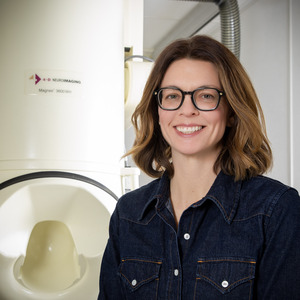Stacy Dolan
 MSN, Minneapolis VA Medical CenterVA Medical Center (VAMC)
MSN, Minneapolis VA Medical CenterVA Medical Center (VAMC)
Research Nurse
Study Coordinator
dolan228@umn.edu
Education
MS, Nursing, University of Minnesota, School of Nursing
BS, Business, University of Minnesota, Carlson School of Management
Publications
The effects of Human Leukocyte AntigenHuman Leukocyte Antigen (HLA)Genes that are located in the Major Histocompatibility Complex (MHC) of chromosome 6 and play a central role in immune recognition. Most investigations of association of HLA to various diseases have focused on evaluating HLA allele frequencies in diseases of interest, as compared to the general, healthy population. Such studies have demonstrated HLA involvement with cancer, autoimmune, and in- fectious diseases. HLA Class I proteins (HLA-A, B, C) are expressed on all nucleated cells and present peptides from endogenous proteins to cytotoxic T lymphocytes engaged in immune surveillance. HLA Class II proteins (HLA-DRB1, DRB3/4/5, DQB1, DPB1) are expressed on antigen-presenting cells and present peptides derived from exogenous proteins to CD4+helper T cells. A previous study of Gulf War syndrome in 27 veterans found that HLA DRB1*15 was more prevalent in cases than controls with an odds ratio of 1.66, although this association was not statistically significant.
DRB1*13 and Apolipoprotein EApolipoprotein E (ApoE)a plasma lipoprotein discovered in 1973 (Shore and Shore 1973). It binds low-density lipoprotein receptors, thereby facilitating cellular lipoprotein exchange and metabolism. The human apoE polypeptide consists of 299 amino acids and comprises three polymorphisms resulting from single amino acid substitutions. Three isoforms (E4, E3, and E2) are the result of cysteine^aEUR"arginine interchanges at two sites, namely residues 112 and 158; however, other genetic variants have been described. These three isoforms, each differentially affecting protein function, result in six phenotypes: three homozygotes (E4/4, E3/3, E2/2) and three heterozygotes (E4/3, E4/2, E3/2). With respect to the number of cysteine residues per mole, E2/2 contains 4, E3/2 contains 3, E4/2 and E3/3 each contain 2, E4/3 contains 1, and E4/4 contains 0. The number of cysteine residues per mole (CysR/mole) provides a numerical, biochemical scale in lieu of the genotype-based categories. on age-related variability of SNISynchronous Neural Interactions (SNI)Zero-lag partial correlations in pairs of MEG time series and denote the strength and polarity (positive or negative) of neuronal interactions. Anomalies in SNIs as assessed by MEG differentiate psychiatric disorders from healthy brain functioning and can discriminate among various brain diseases. From this research, a highly distinctive, unique PTSD SNI signature characterized by miscommunication of temporal and parietal and/or parieto-occipital right hemispheric areas with other brain areas has emerged. These findings, in addition to the growing research applying MEG to other psychiatric disorders, highlight the utility of MEG in identifying biomarkers of disease and underscore the potential for broader clinical applications of MEG. in healthy women EBioMedicine (2018, September) James L, Dolan S, Leuthold A, Engdahl B, Georgopoulos A, & Georgopoulos AP
MSN, Minneapolis VA Medical CenterVA Medical Center (VAMC)